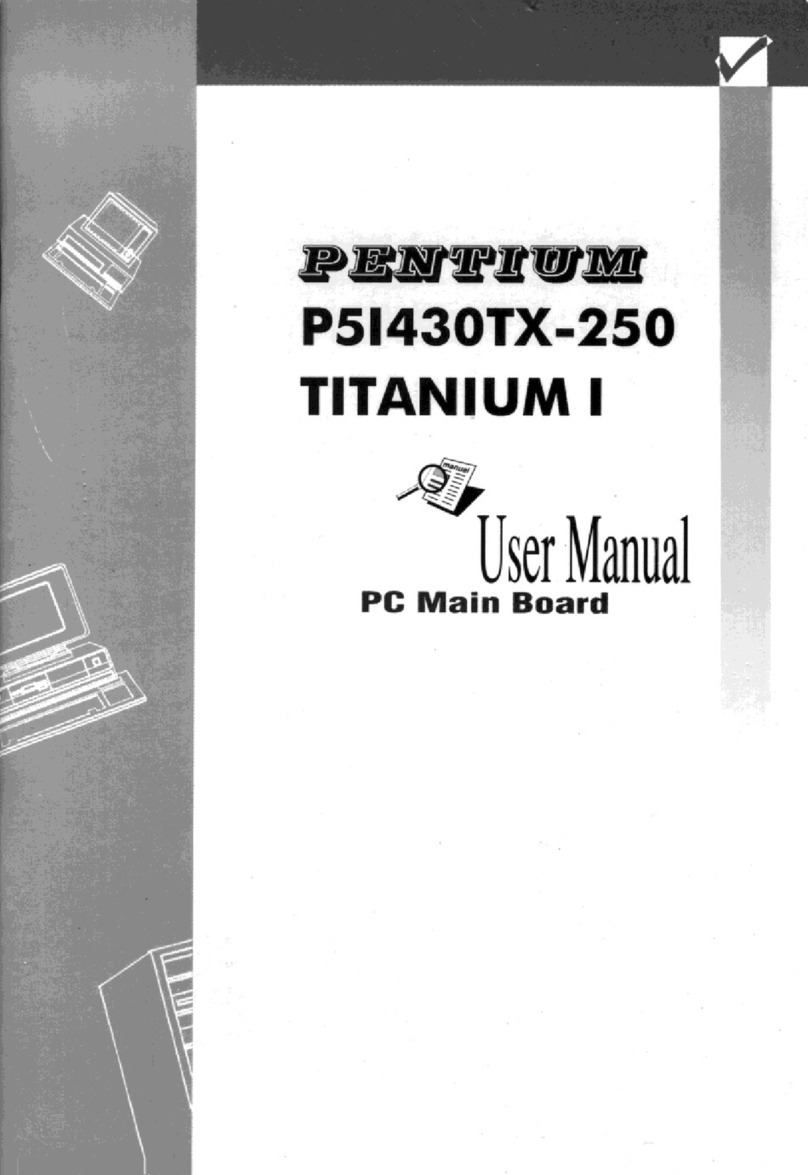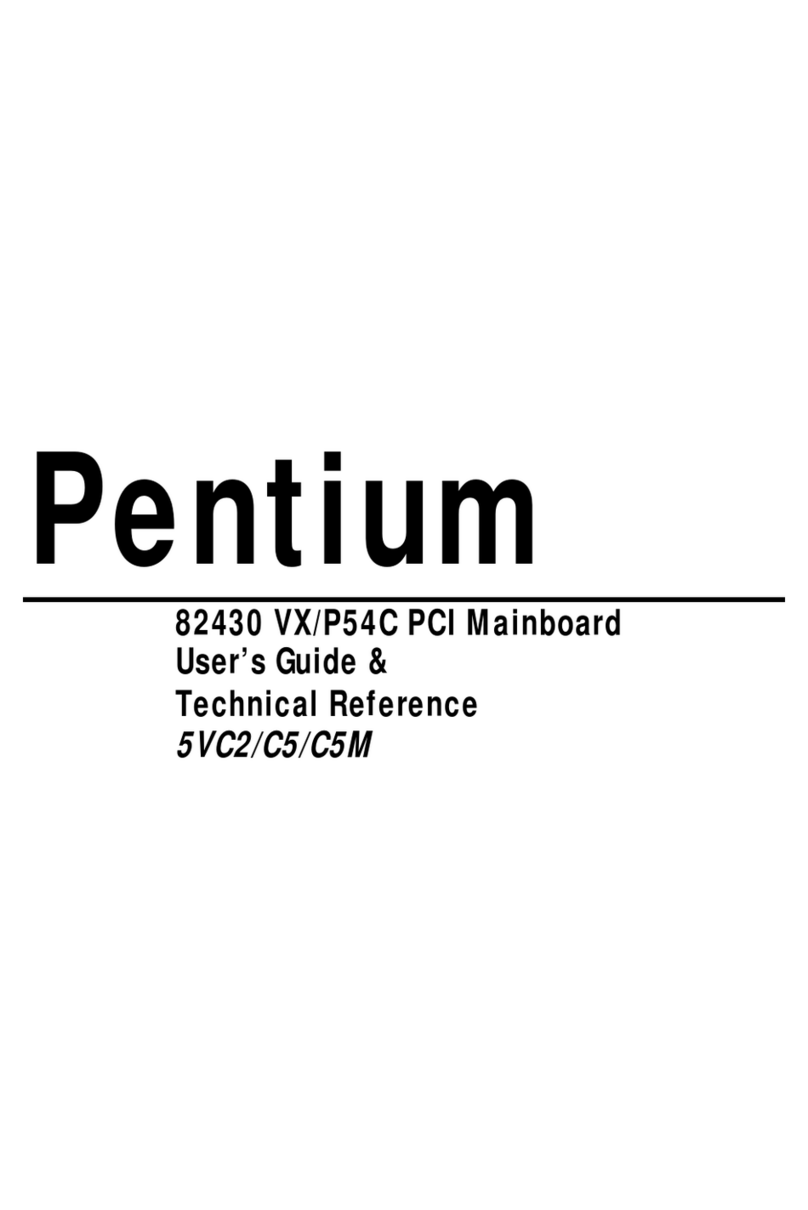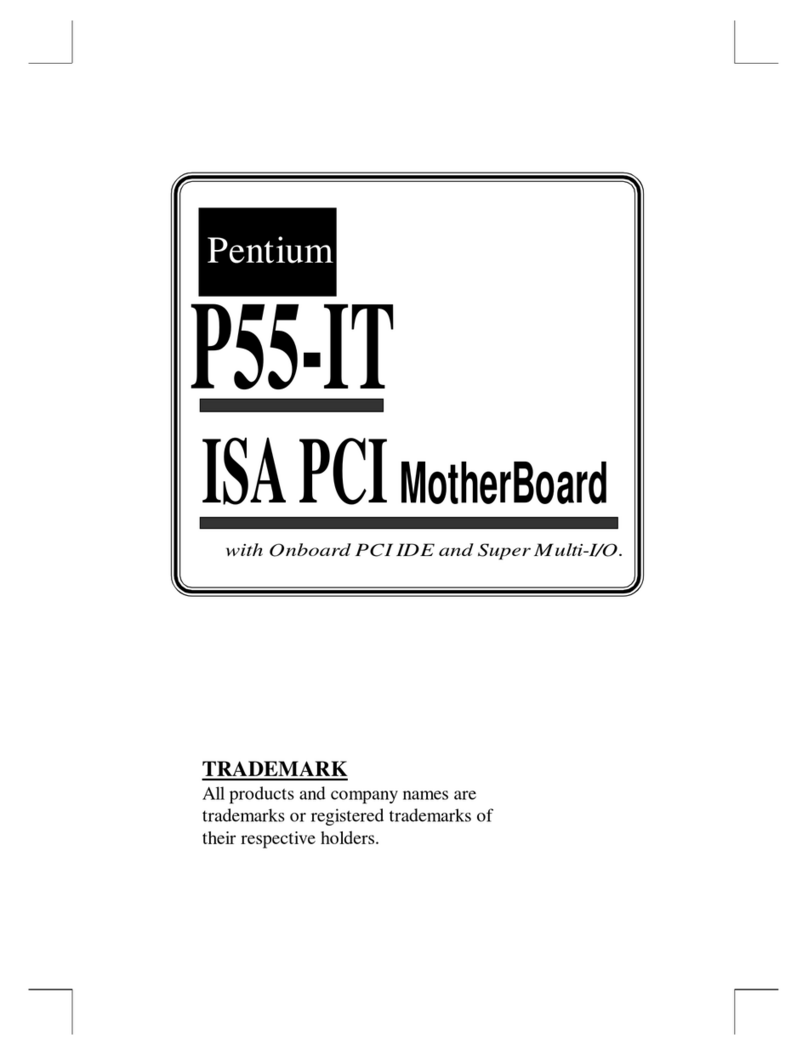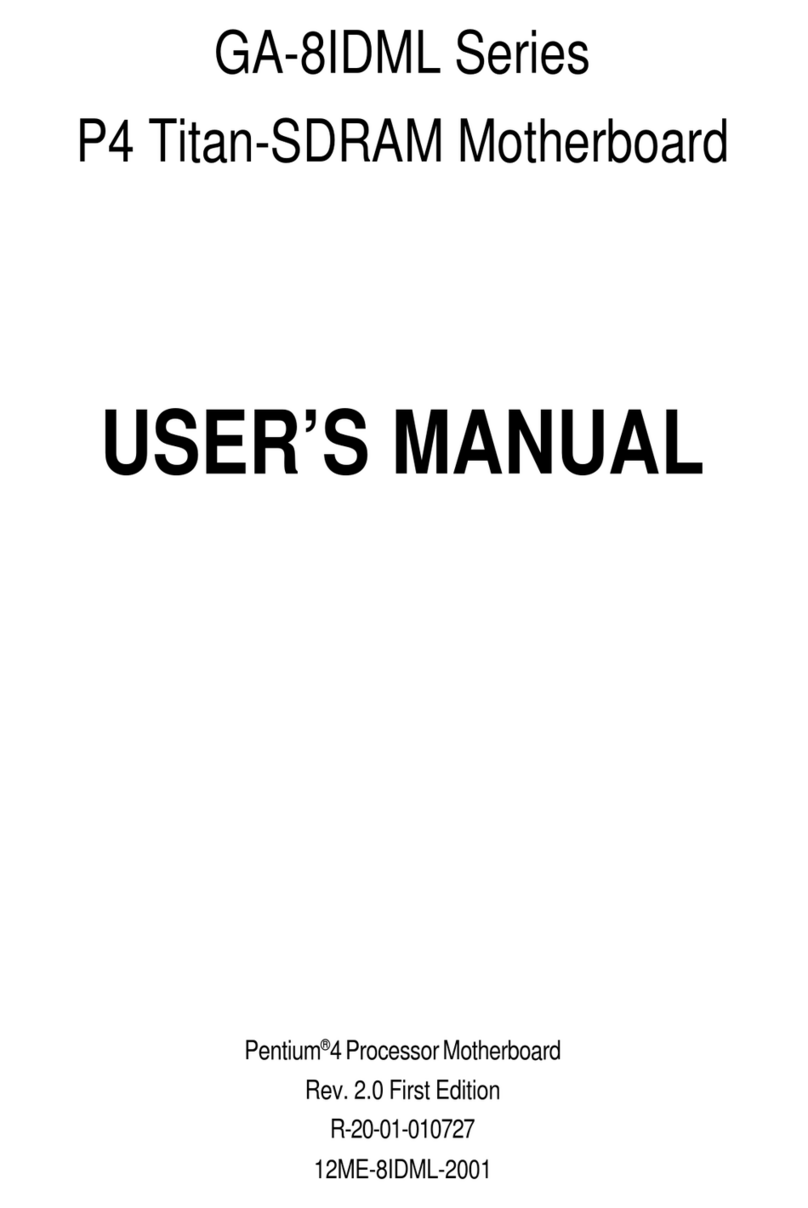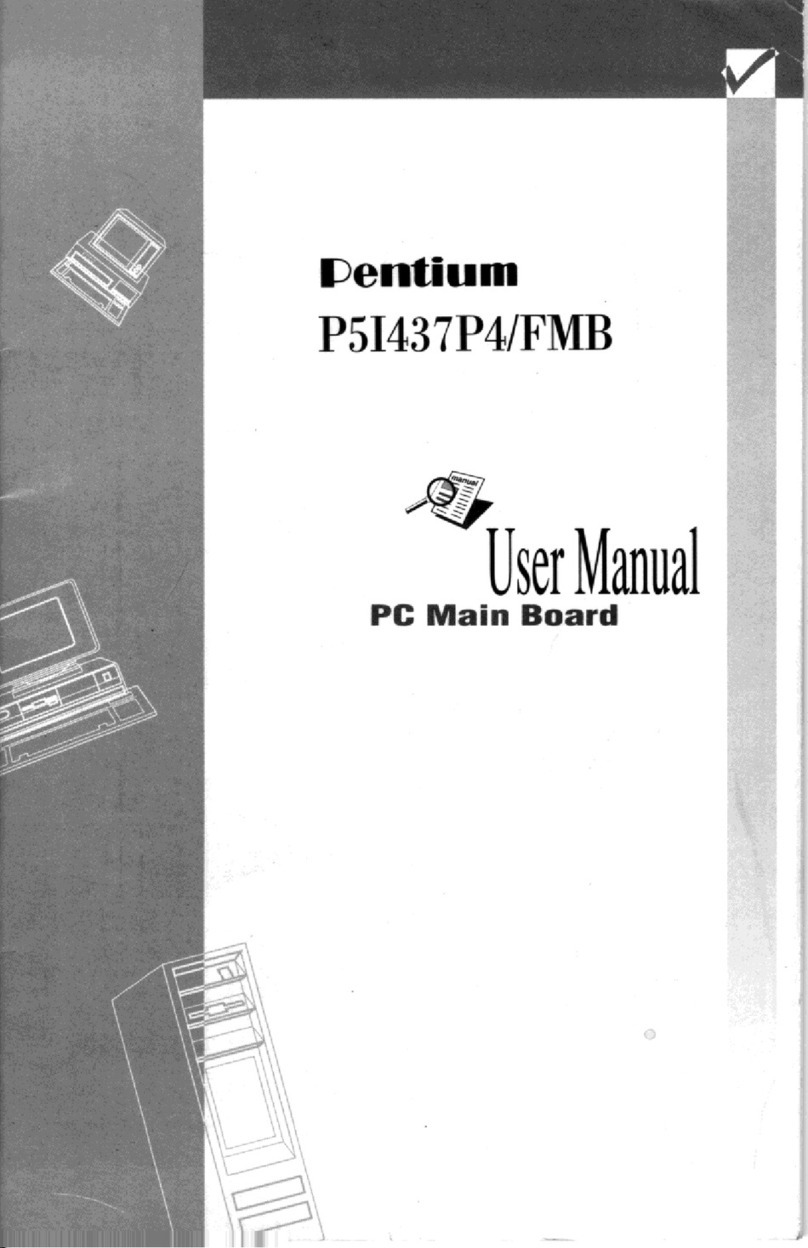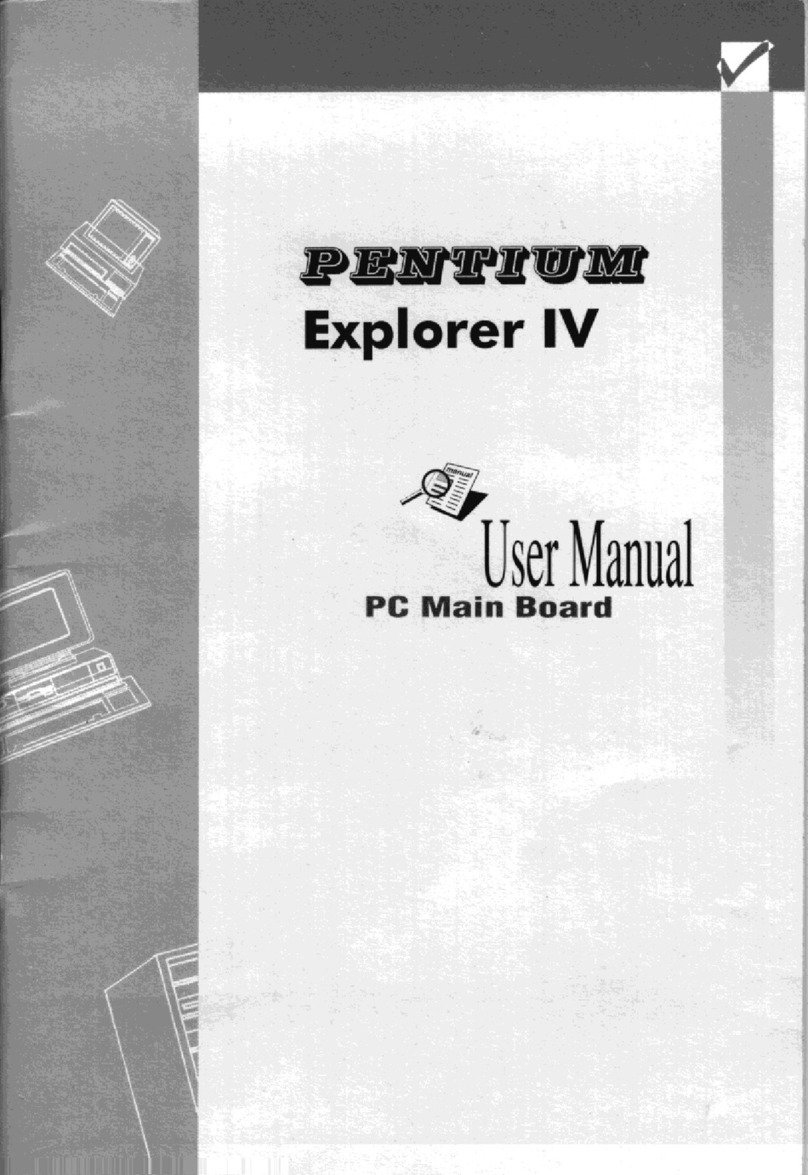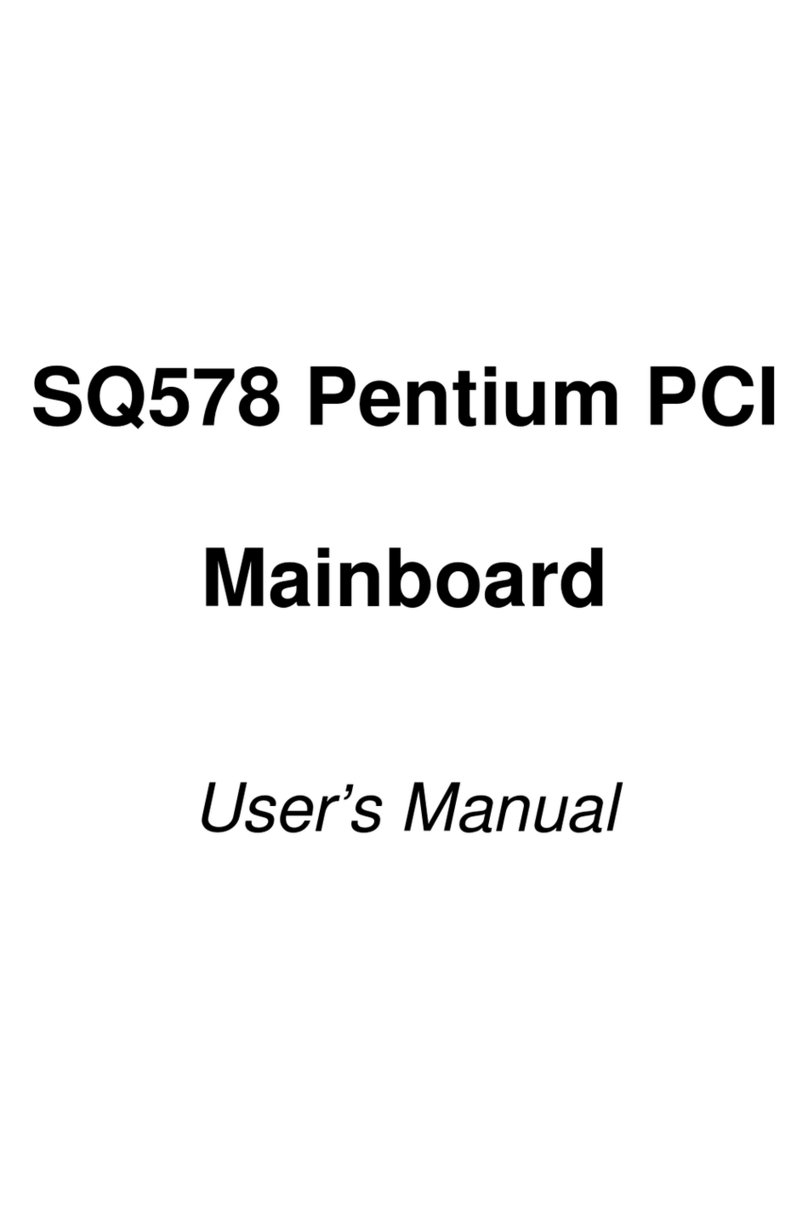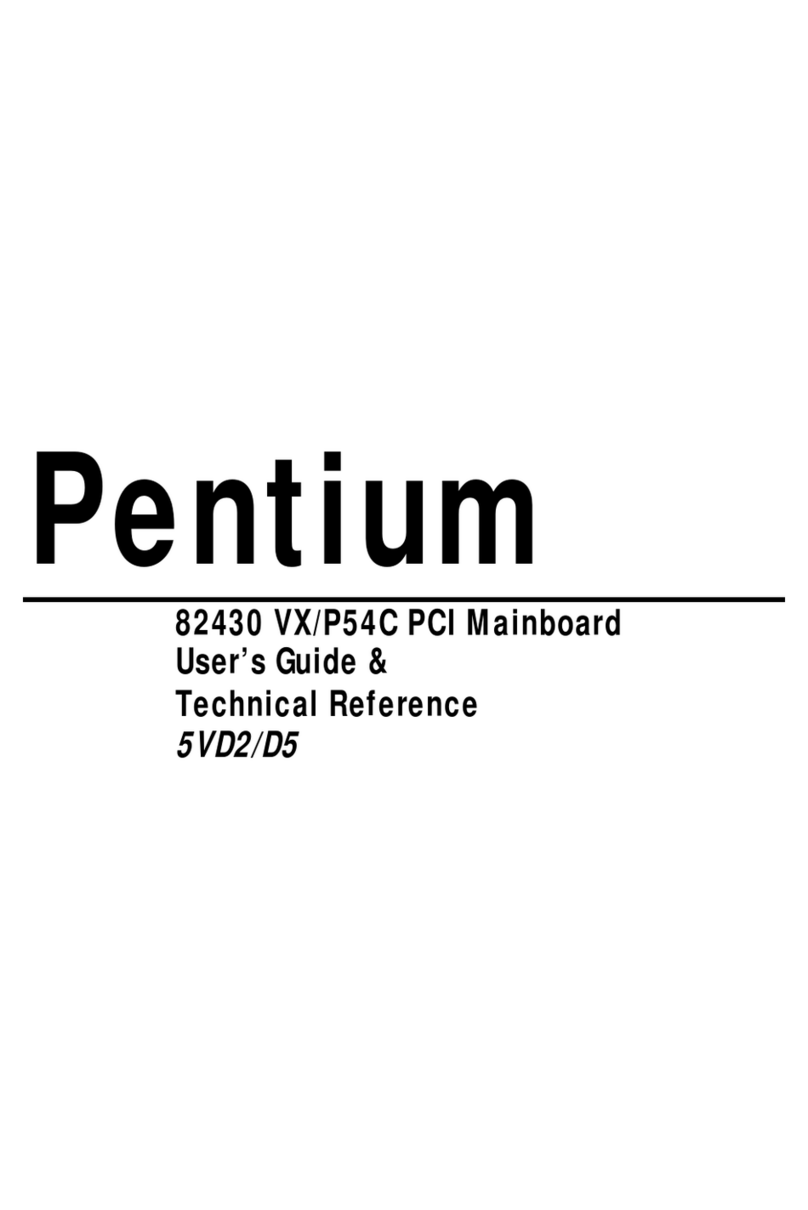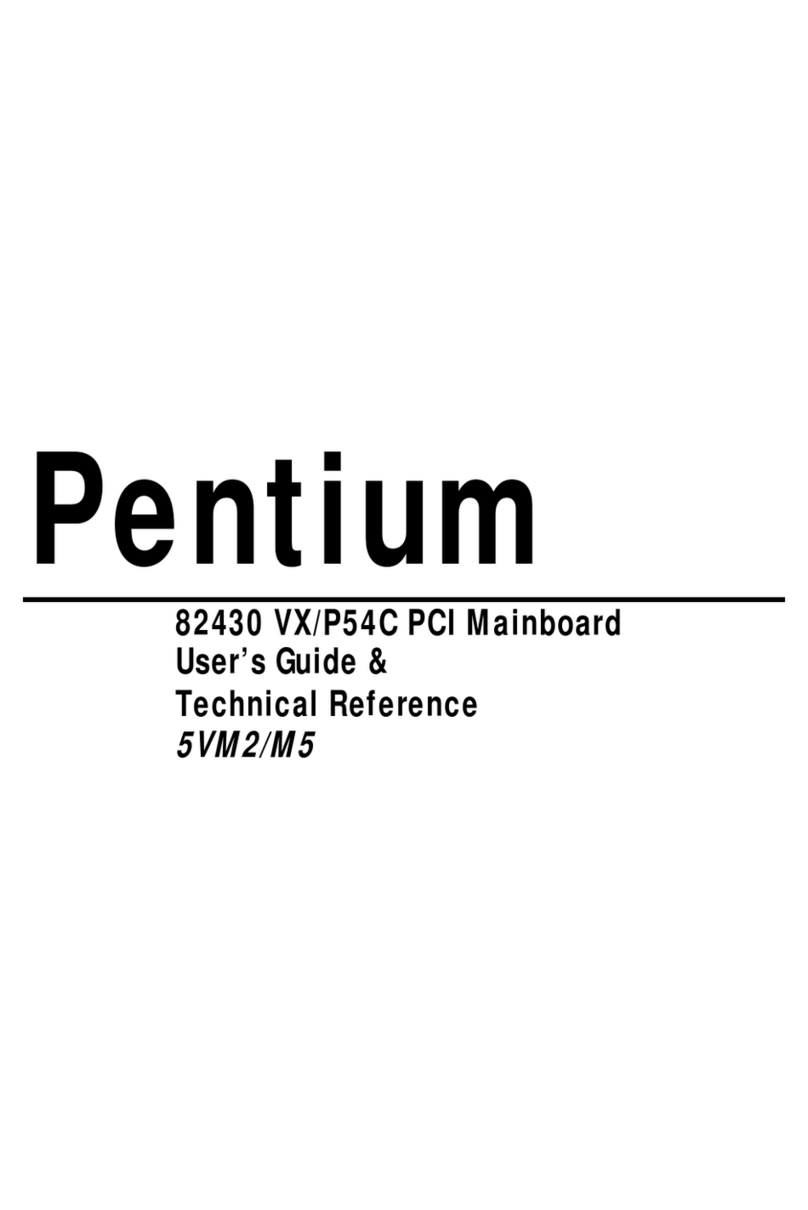Table of Contents
Chapter 1: Introduction .................................................. 1
Key Features ............................................................................... 1
Unpacking the Mainboard........................................................... 2
Electrostatic Discharge Precautions............................................ 2
Mainboard Layout w/ Default Settings ....................................... 3
Chapter 2: Hardware Setup ............................................ 5
Jumpers ....................................................................................... 5
JP5: CMOS Clear Jumper ..................................................... 5
EMI1/EMI2/EMI3 (JP52/EMIGND/JP53): EMI Ground
Jumper ................................................................................... 6
CPU Type Configuration ............................................................ 7
Step 1: Frequency Setting..................................................... 7
Pentium Ð 75/90/100 CPU Settings (1.5 x clock)............. 7
Pentium Ð 100/120/133 CPU Settings (2.0 x clock)......... 8
PentiumÐ 150/166 CPU Settings (2.5 x clock) ................. 9
Pentium Ð 180/200 CPU Settings (3.0 x clock)................ 9
Step 2: CPU Single/Dual Voltage Setting.......................... 10
Single Voltage CPU Setting ........................................... 10
Dual Voltage CPU Setting.............................................. 11
Memory Configuration ............................................................. 12
Memory Configuration Table.............................................. 12
RAM Bank Installation Notice............................................ 12
Cache Configuration ................................................................. 13
Cache Size and RAM Locations ......................................... 13
Multi I/O Port Addresses .......................................................... 13
Connectors ................................................................................ 14
ATX PW Ñ ATX Power Supply Connectors ..................... 14
COM1, COM2Ð COM1/COM2 Connectors ....................... 14
FDC Connector ................................................................... 14
JP51 Ñ Force Power Down Jumper (Optional).................. 14
J19 Ð Hardware Reset Control............................................. 14
J24 Ð HDD LED Connectors ............................................... 15
IDE1/IDE2 Ð On-board Primary/Secondary IDE HDD
Connectors ........................................................................... 15
CN5 Ð IR Connector............................................................ 15
CN2 Ð PS/2 Keyboard Connector ....................................... 15
J17 Ð Keylock & Power LED Connector ............................ 15
LED1 Ñ ATX Power Supply Indication LED ................... 15
CN1 Ð PS/2 Mouse Connector ............................................ 15
PRT Ð Parallel Port Connector ............................................ 15
